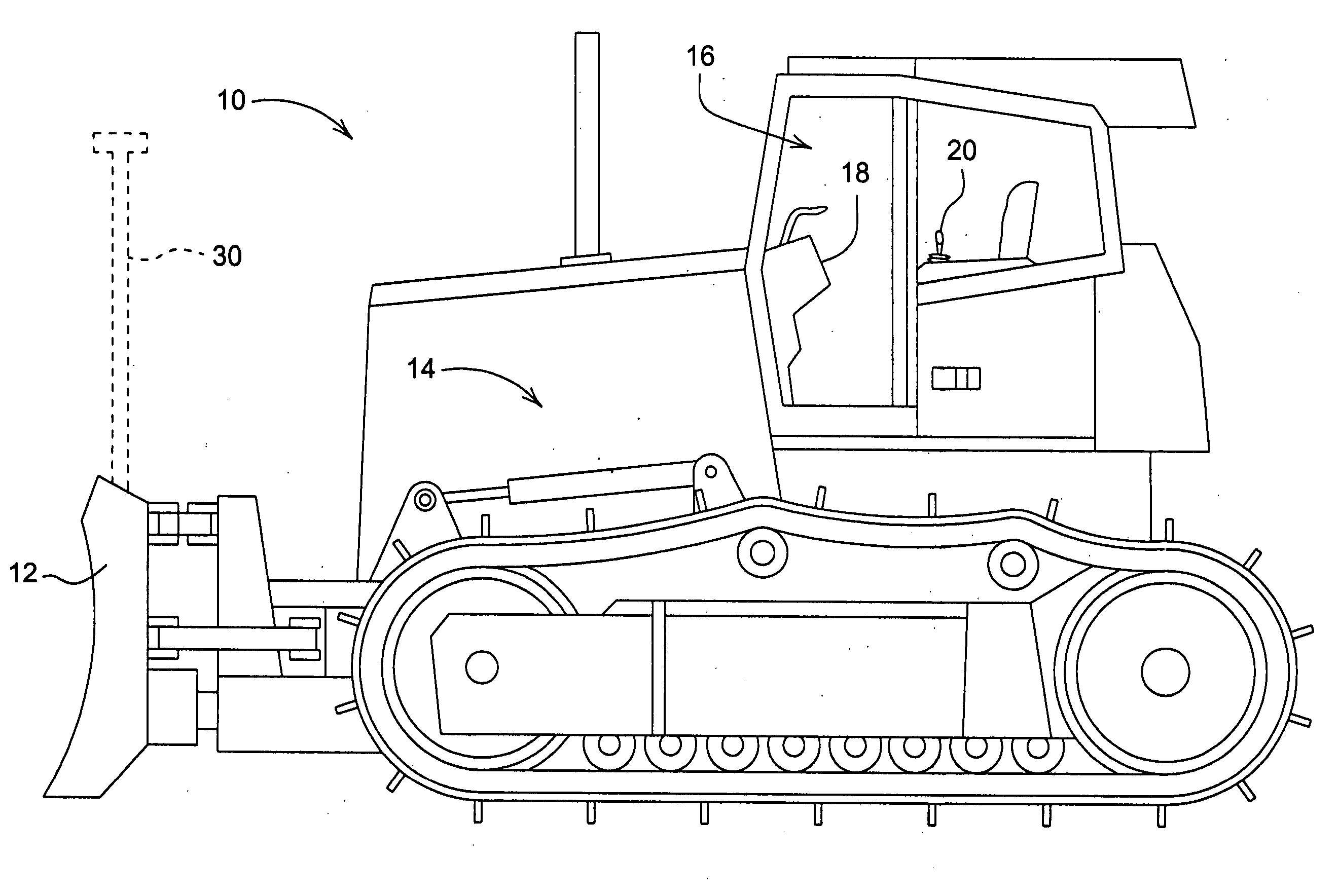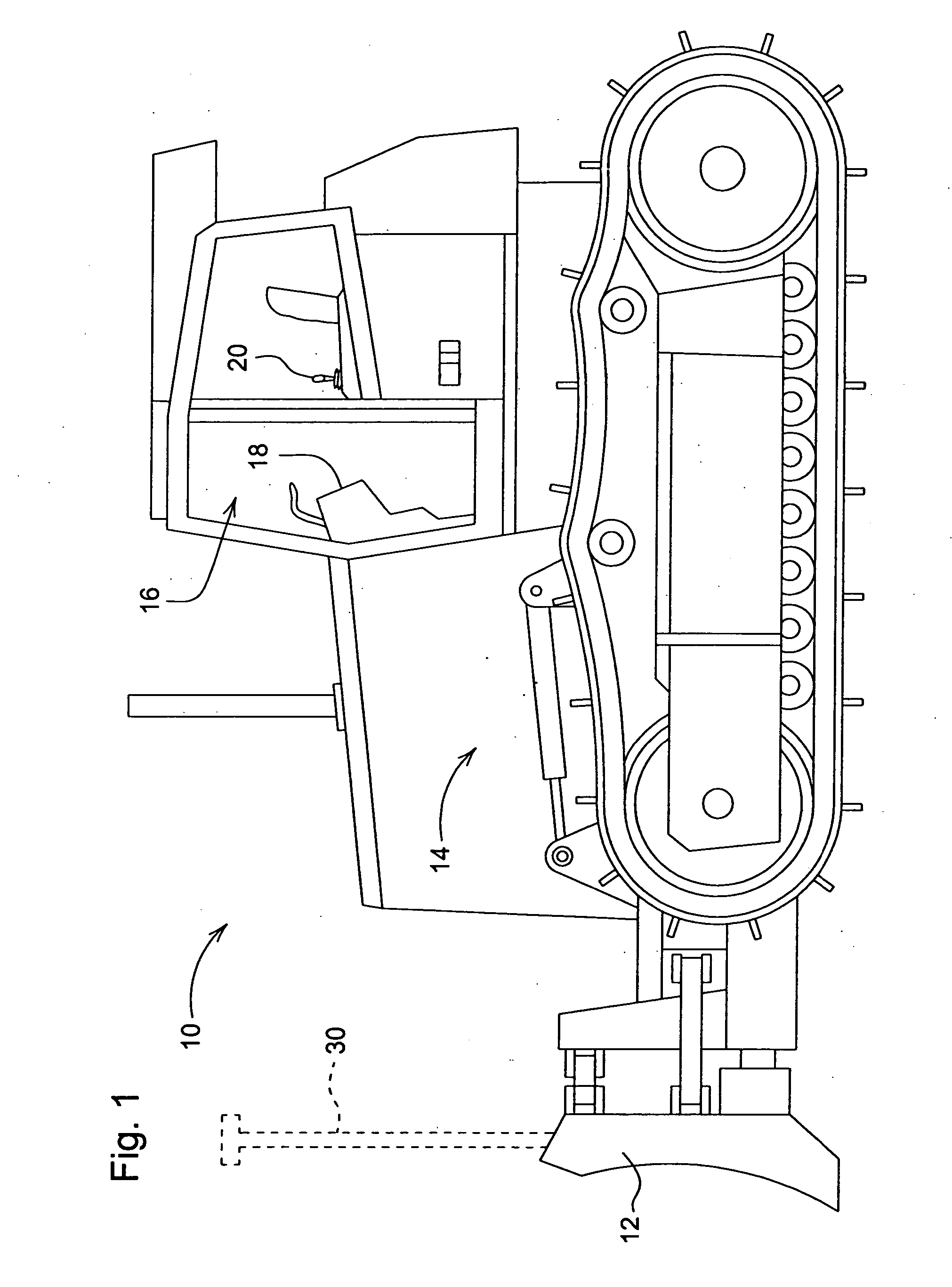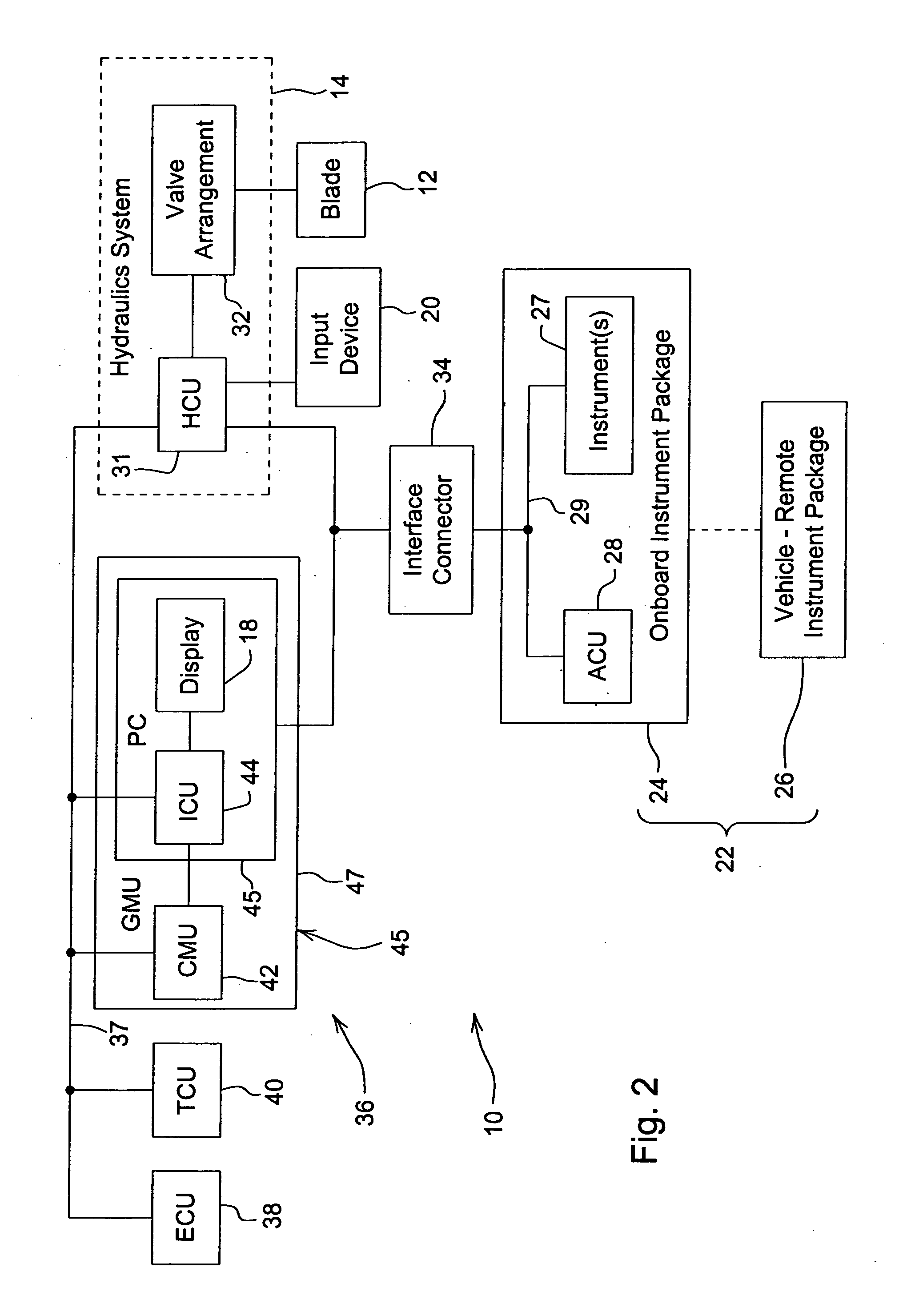Method and apparatus for retrofitting work vehicle with blade position sensing and control system
- Summary
- Abstract
- Description
- Claims
- Application Information
AI Technical Summary
Benefits of technology
Problems solved by technology
Method used
Image
Examples
Example
DETAILED DESCRIPTION OF THE DRAWINGS
[0010] Referring to FIG. 1, a work vehicle 10 has a blade 12 which may be used for moving material (e.g., dirt, rock) to grade a worksite according to a predetermined grading plan. To facilitate achievement of the desired grade across the worksite, the work vehicle 10 may be retrofitted with any of a number of blade position sensing and control systems. Such systems may be in the form of, for example, a laser-based blade position sensing and control system, a GPS-based blade position sensing and control system, a sonic-based blade position sensing and control system, combinations thereof, or other suitable system. The work vehicle 10 is configured to be retrofitted with any of such systems without modification of the hydraulics system 14 of the vehicle 10.
[0011] Illustratively, the vehicle 10 is depicted as a crawler dozer. However, it is to be understood that the vehicle 10 may be configured as other types of work vehicles with earth-moving or ...
PUM
 Login to View More
Login to View More Abstract
Description
Claims
Application Information
 Login to View More
Login to View More - R&D
- Intellectual Property
- Life Sciences
- Materials
- Tech Scout
- Unparalleled Data Quality
- Higher Quality Content
- 60% Fewer Hallucinations
Browse by: Latest US Patents, China's latest patents, Technical Efficacy Thesaurus, Application Domain, Technology Topic, Popular Technical Reports.
© 2025 PatSnap. All rights reserved.Legal|Privacy policy|Modern Slavery Act Transparency Statement|Sitemap|About US| Contact US: help@patsnap.com



